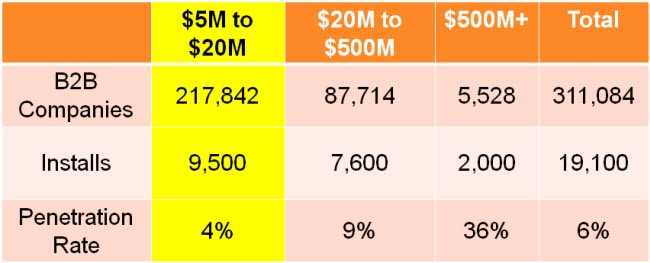25 Lead Management Statistics That Prove Marketing Automation Works
 Are you a numbers person? Do you want figures that show how lead management through marketing automation actually provides better results? Take a look at these marketing automation and lead management statistics. What marketing automation statistics do you have to share?
Are you a numbers person? Do you want figures that show how lead management through marketing automation actually provides better results? Take a look at these marketing automation and lead management statistics. What marketing automation statistics do you have to share?
- Sales teams process over 58% of marketing-qualified leads (MQL) with a close rate of more than 23% – AcquireB2B
- Lead scoring provides an ROI of 138% versus companies that don’t score leads (78%) – MarketingSherpa
- Lead nurturing programs result in 2x open rates and 3x click-through rates compared to one-off email blasts – Silverpop
- 47% higher order value on nurtured sales versus non-nurtured sales – Silverpop
- 75% of companies using MA see ROI within 12 months, 44% within 6 months – Focus Research
- Companies using MA source 45% more pipeline than those who don’t use MA – Marketo
- Sales agents spend 22% more time selling when MA is deployed – Marketo
- MA drives a 14.5% increase in sales productivity and a 12.2% reduction in marketing overhead – Nucleus Research
- 28% of marketers saw an increase in revenue per sale attributable to marketing automation – Chief Marketer
- 350% return on investment and 100% annual revenue growth while saving $400K and generating $2MM in incremental gross revenue – Acteva
- 70% companies declare that MA met or exceeded ROI expectations – Focus
- Mature marketers achieve 32% greater revenue through the use of MA than non-mature marketers – Marketo
- Full deployment of MA reduces close rates from 1:221 to 1:20 – Marketo
- Companies using MA for nurturing experience a 451% increase in qualified leads – The Annuitas Group
- MA provides 225% increase in prospect volume that convert to sales opportunities – ShipServ
- 3x more leads passed to sales after one month – Marketo
- MA reduces ignored leads from 80% to 25% – Bulldog Solutions
- Companies that automate lead management see over 10% increase in revenue in 6-9 months – Gartner Research
- 47% of MA-nurtured leads make larger purchases than non-nurtured leads – The Annuitas Group
- Companies achieve a 15% savings on creative productions with MA – Gartner Research
- Companies that deploy lead nurturing through MA generate 50% more SQLs at 33% lower cost – Forrester Research
- MA-generated personalized emails improve click-through rates by 14% and conversion rates over 10% – The Aberdeen Group
- Event-triggered messaging saves approximately 80% of direct mail budget – Gartner Research
- MA-generated emails with high relevancy drive 18x more revenue than traditional email blasts – Jupiter Research
- Companies using MA achieve 5% less marketing waste than non-MA companies – Gartner Research
As more companies adopt lead management through marketing automation, there will be more statistics to share!











